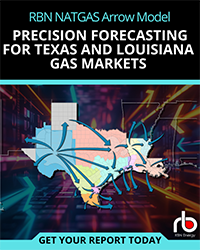The New England states and ISO-New England, which manages the region’s electric grid, are taking steps to keep the lights on during polar vortex events until new natural gas pipeline capacity through New England comes online. They also are making progress on an effort to have electric customers pay to help support new pipeline capacity developed specifically to serve gas-fired units. But while new gas-fired generation is being built in the region to replace older coal (and nuclear) capacity being retired, gas’s role in New England electricity production may well be stymied by a push to import large amounts of eastern Canadian hydroelectric power. Today we examine how New England is playing gas against hydro, and how the outlook for gas consumption by generators may be less bullish than some think.
New England has been turning away from coal-fired generation, mostly in favor of gas-fired power. But as we have said often, there is not enough gas pipeline capacity into New England to fuel all (or sometimes even most) of the region’s growing fleet of gas units during the winter months, especially when gas demand for business and residential space heating is high. In Episode One of this series, we explained that ISO-New England is implementing several stop-gap measures to keep the lights on, and is considering various longer-term fixes that would bring the region’s electric needs, gas supply and air quality into a zen-like balance. The near-term fix is the Winter Reliability Program (WRP), which among other things incents oil stockpiling and gas-to-oil fuel switching when gas supplies for generation run tight. Longer term, ISO-New England and policymakers are considering ways to encourage development of new gas pipeline capacity to serve the electric sector. The New England States Committee on Electricity (NESCOE), has suggested a plan to add at least 600 MMcf/d of capacity later this decade, paid for through a monthly charge on utility bills. Midstream companies are already enthusiastic about this idea. They continue to win support from local distribution companies (LDCs) for incremental gas pipeline capacity—Kinder Morgan in late July announced deals totaling 0.5Bcf/d with several LDCs—but they need a NESCOE-type plan to support the additional pipeline capacity generators require.
|
N E W ! ! Tailgate Blues: NGL Markets and Natural Gas Processing Economics We have just released our eighth Drill-Down report for Backstage Pass subscribers reviewing natural gas processing economics and the RBN Frac Spread and Processing Economics models. More information about Tailgate Blues here. |
What we have not discussed yet, though, is the very real possibility that the New England states also may decide to import a sizable amount of hydro power—1,200 MW as soon as 2018 and maybe 3,600 MW as soon as 2022--from existing or planned hydro megaprojects in Quebec and Newfoundland. To deliver more than a few hundred MW of around-the-clock power to New England, the states would need to socialize the cost of one, two or even three new 1,200 MW transmission lines. That means adding the cost to ratepayer bills just like the plans to add gas capacity. Your first thought may be, “Who cares about hydro?” But just about every MWh of electricity imported from eastern Canada would effectively replace gas-fired power generation in New England, meaning less demand for US natural gas. And while it should be noted that new transmission lines are not easily built without controversy in environment friendly New England, analysis from a recently released confidential report to Massachusetts policy makers confirms that these plans are real and that they could have a big impact on gas power burn demand. Figure #1 from that report shows the reference or business-as-usual case—that is, with no new hydro imports, a continuing ramp-down in coal- and oil-fired generation and a gradual uptick in wind and solar. Gas, as you can see, is the big winner if this plays out.
Join Backstage Pass to Read Full Article








